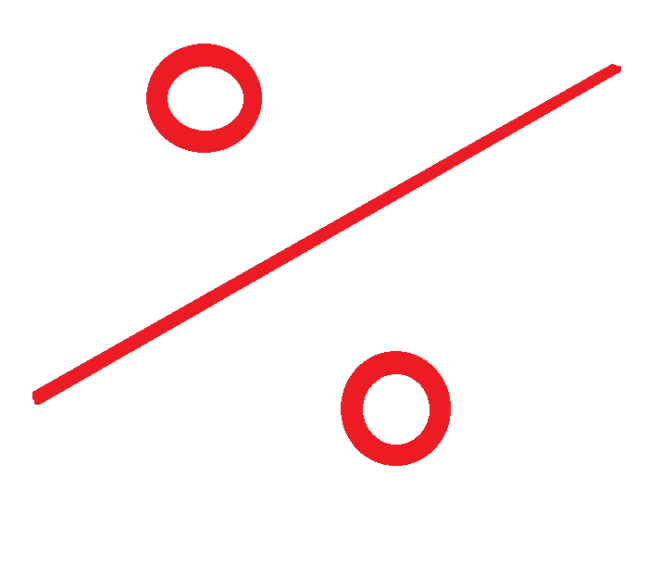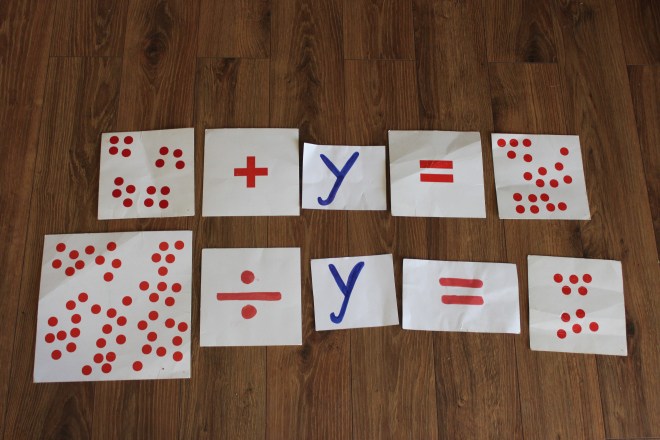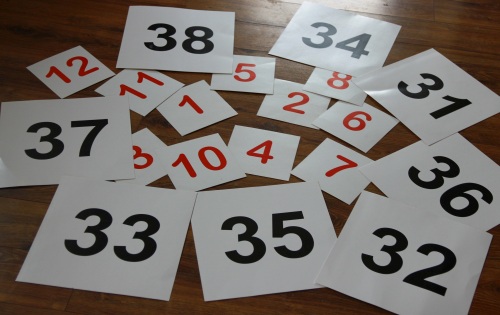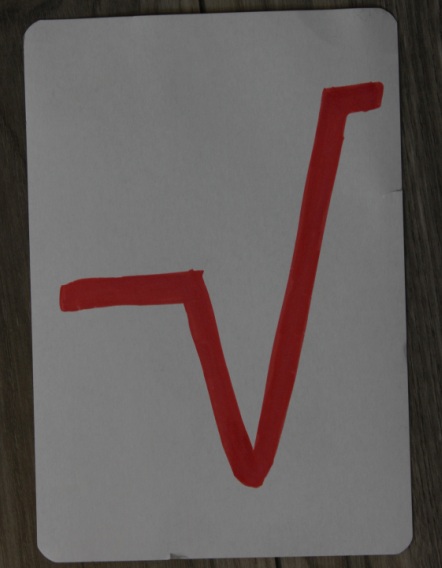
ROOTS
This all Doman stuff must sound crazy to you and it sounds crazy to me, too. However, I do not belong to a group of traditional mums and I need something more so I decided to give it a try. I am really curious to know if it really works. Being a crazy and, at the same time, well-organized mum I have already completed all Doman’s suggestions on teaching maths to a baby. What now? Let’s make it even crazier.
I have already gone beyond Doman’s ideas – I introduced percentages. Let’s do roots now. It certainly won’t do any harm because I can’t imagine how looking at maths may be harmful. Certainly, it will stimulate my baby’s brain contributing to its growth.
We all have to bear in mind that the main reason behind the Doman method is not the fact that a toddler at the age of 2-3 will be able to read or count because kids differ. It is all about brain stimulation and a boosting child’s intelligence. The more information we manage to present to our baby before he or she is 6 years old, the easier school education will be. At least, this is the main assumption. At the moment, I find it funny to imagine Maja in the future at school during her maths lesson learning something new and thinking “it rings a bell” and non conscious of the fact that she has already learned it when she was such a young baby she can’t remember it. Of course, she will understand and absorb this “new” old material really fast. Is it only a wishful thinking?
My friends’ sons who have been raised bilingually like my daughter are convinced they were born knowing English. I remember how offended was one of them when one of his friends said during an English lesson he knew something because his mum had taught it.
It will be really great if Maja feels it in a similar way that she has maths, reading and English in her blood and that she has been born with it. However, we need to wait to verify the real effects of Doman upbringing.
Speaking of roots, I followed standard Doman’s principles which means 3 operations, 3 times daily. I created a radical sign with a red marker. We began with square roots. Then, we had cube roots and fourth roots. I am a bit embarrassed to admit that I had to revise this part of maths curriculum before we started.
Because of the fact that I do my best to be the English only speaking mother, I ask questions such as: „What is the square root of 36?” immediately showing the card with 6 dots and saying “six.” In case of cube roots and fourth roots I wrote a small digit 3 or 4 at the top of the radical sign.
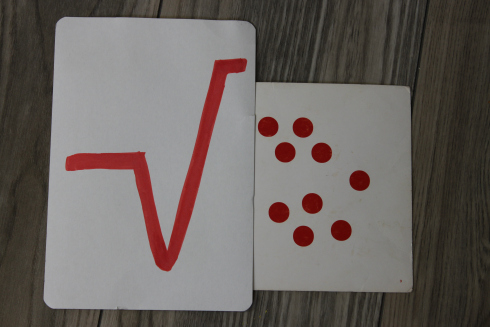
We spend only two, maybe three days covering roots because we are limited to our 100 dots. With roots there aren’t many options. What a pity! This was really interesting for us. The good news is that after a really long break from problem-solving opportunities, I decided to give it a go. Maja who some time ago refused to choose anything, made a choice this time. She choose the correct solution for the operation with a square root. She did it happily and smiled widely when I praised her because her answer was correct.
WHAT ABOUT MATHS IN POLISH
The Doman method was invented with reference to one language only – the English language. Despite this, it is used worldwide by people speaking different languages. This is confirmed on YouTube when you can find videos like the following ones:
- a baby reading in English
- a little child reading in Italian
Doman doesn’t refer in any way to teaching maths or reading in two languages. However, he puts an emphasis on the fact that for a young child it is extremely easy to absorb languages. He even says, for example in his book: “How to Multiply Your Baby’s Intelligence,” that small children are linguistic geniuses
I feel it doesn’t make any sense to go over everything we have already done but in the other language which in our case is the Polish language (naming quantities, multiplication, addition, subtraction, comparison of quantities, number sequences, percentages etc.) The enthusiasm and optimism in books by Doman is contagious. He made me believe that small children are geniuses and that they learn quickly and are able to make connections between two different facts and come to correct conclusions if they are provided with clear and concrete information. Doman claims revising is boring for small children and as his follower I have assumed that doing the same maths stuff in Polish would be extremely boring for my baby.
However, I think it is necessary for her to know the names of numbers 1-100 in Polish. Initially, I was going to introduce digits in two languages simultaneously with the help of my husband responsible for the Polish aspect of Maja’s education. I have already completed introducting all maths programme with dot cards in English and I have changed my mind. At the moment, interrupting my husband’s reading programme just to start introducing maths doesn’t make any sense to me. What convinces me against it is also the fact that Maja has been really interested in the Polish reading programme recently (here is the reason :).
There is no way daddy will manage more than 3 sessions daily so adding maths on top of his reading programme is out of the question. He is not as well-organized as I am and he wouldn’t manage even his 3 “lessons” but for Maja’s grandpa or grandma or others’ help.
This is the plan for the time being: I start introducing digits in English and my husband continues his reading programme with Polish reading cards. He will introduce digits 1-100 in Polish after he completes his reading programme or when we notice that Maja starts losing interest in reading cards. In that case we will put away the reading cards and replace them with number cards. As she will know all the basics of maths in English, I think it is not necessary to cover the maths programme again. I will be enough if my husband sometimes shows her an equation explaining it in Polish. He will do it at his own pace after he finishes presenting everything he has to present beforehand.
My assumption is that if the Doman method is to bring about measurable results, Maja who understands maths concepts in English will come to a conclusion that, for example, “ten minus two” is the same as “dziesięć odjąć dwa,” which is “eight” or “osiem.” There won’t be any need of doing the same operations again but in the other language.
